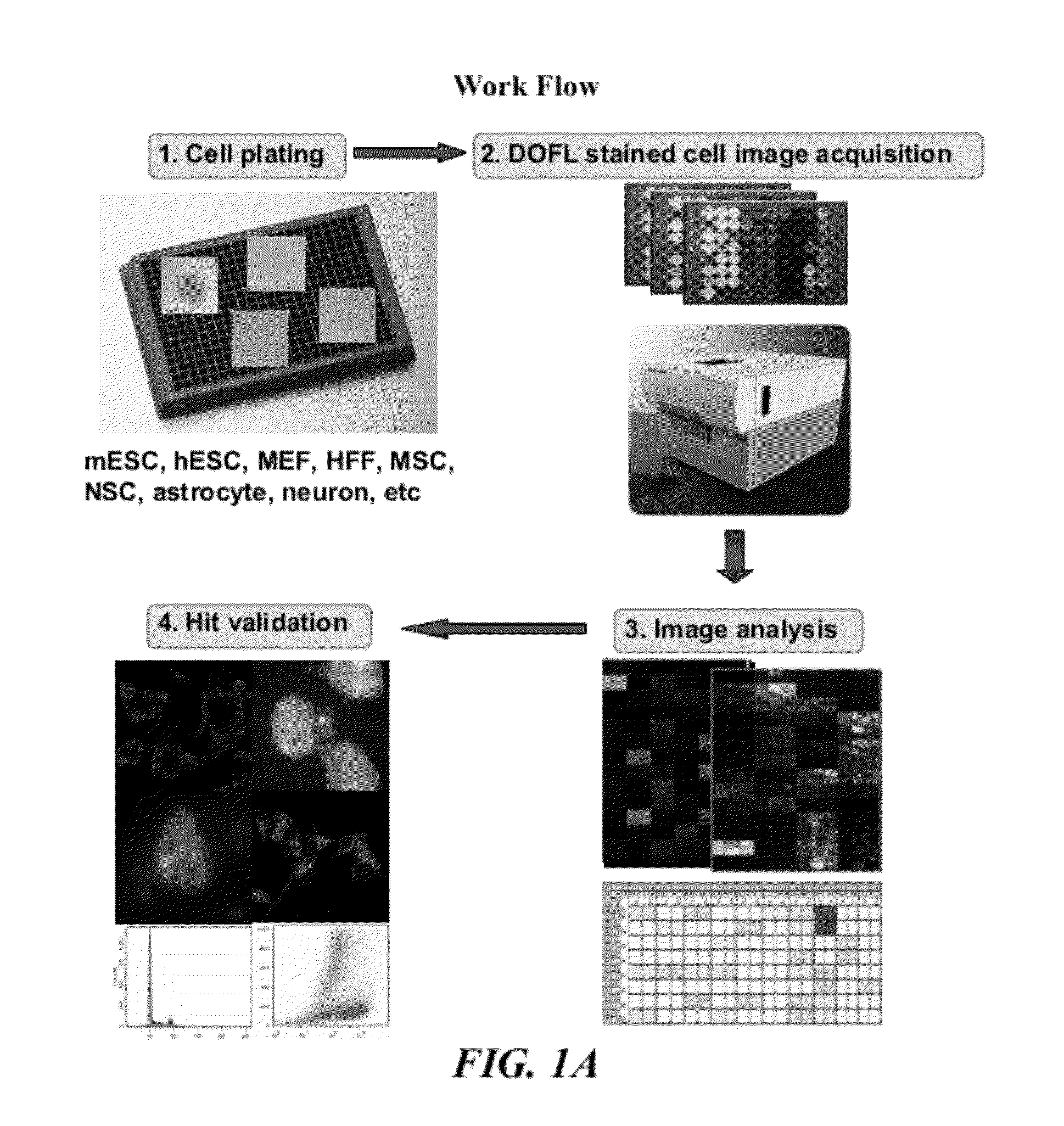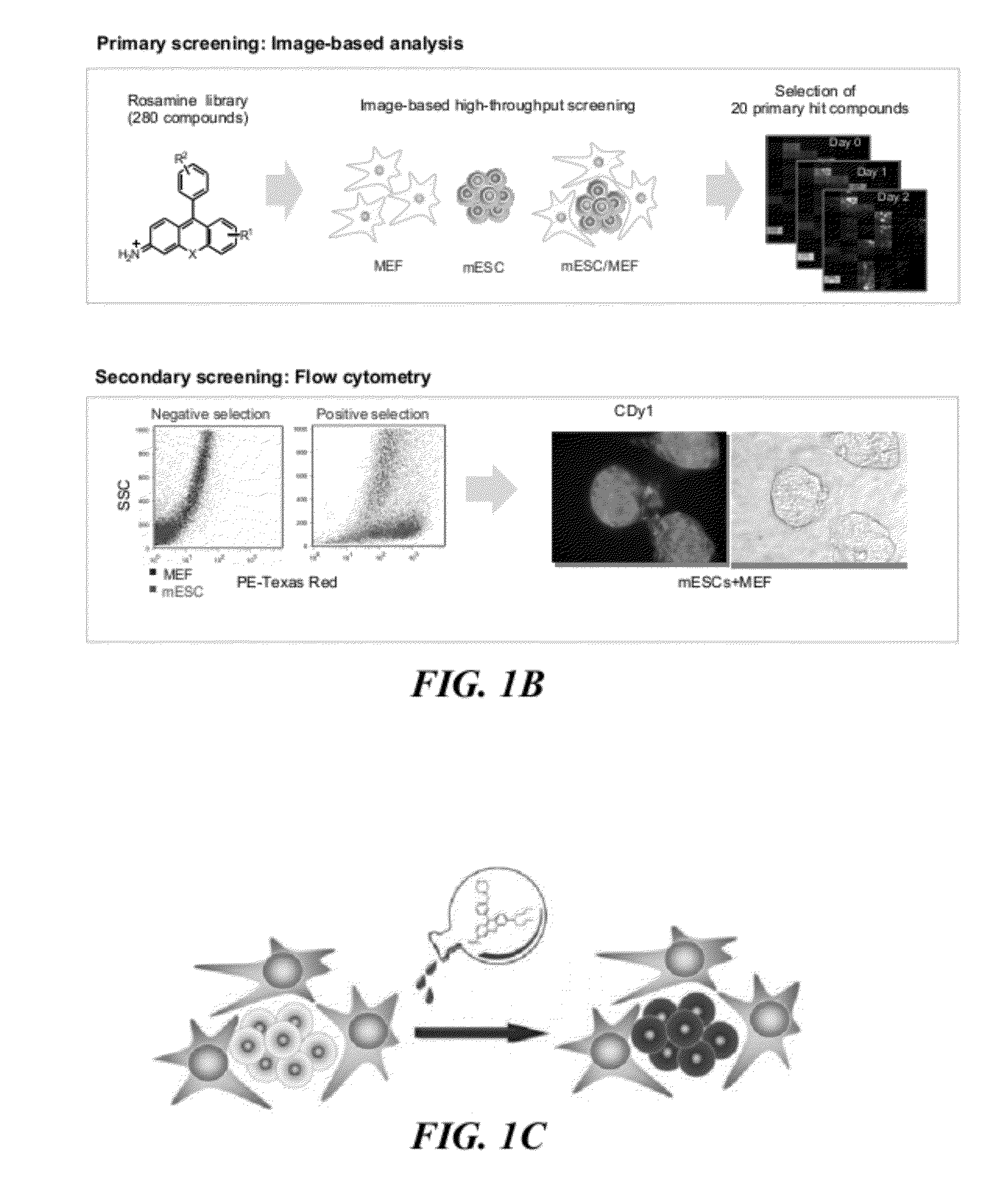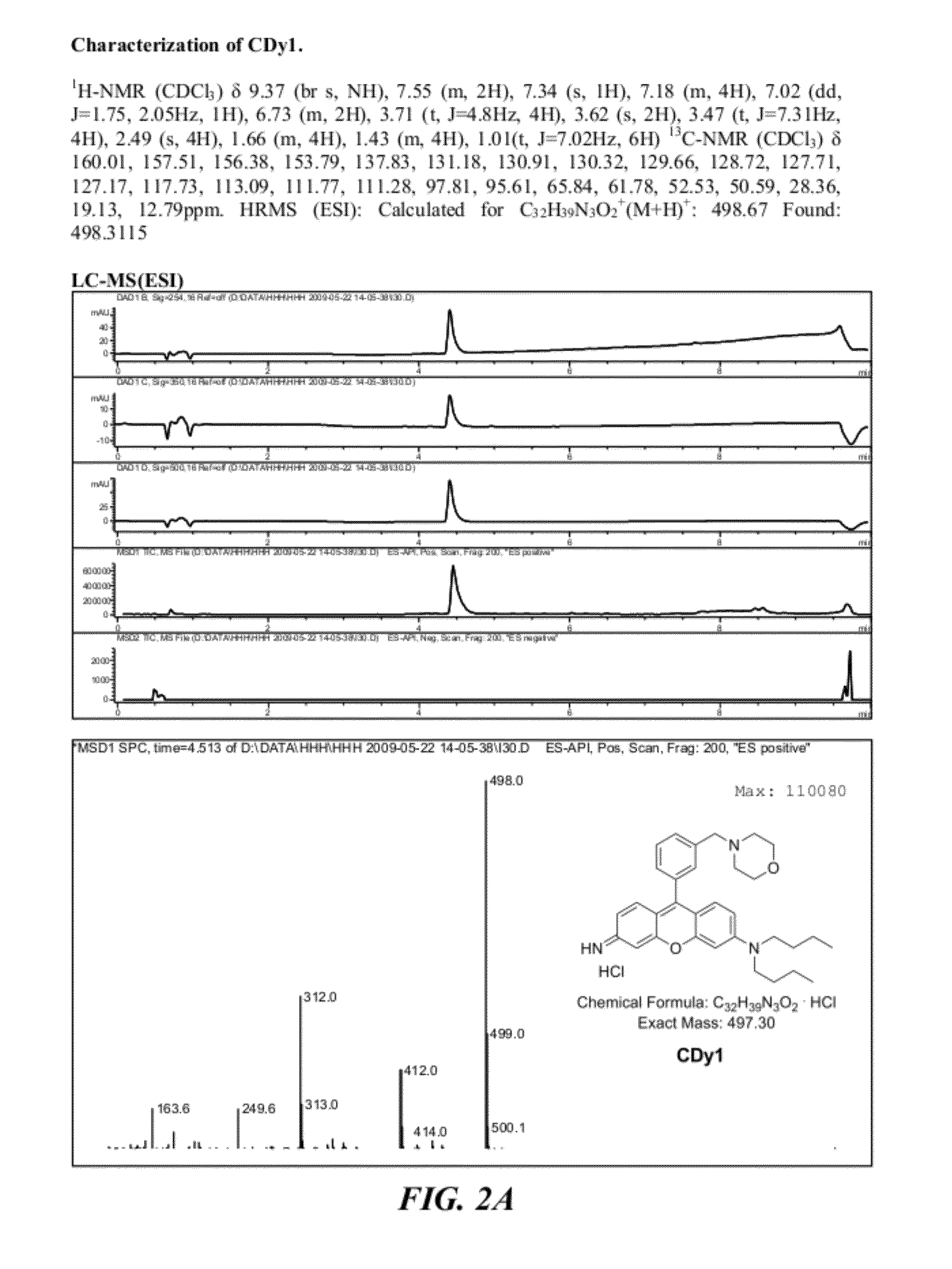Methods for detecting embryonic stem cells, induced pluripotent stem cells, or cells undergoing reprogramming to produce induced pluripotent stem cells
a technology of embryonic stem cells and stem cells, applied in the field of stem cells detection in a sample, can solve the problems of hampered practical use in research and disease therapy, long time, unsuitable cells for further use, etc., and achieve the effect of excellent photophysical properties and more flexibility
- Summary
- Abstract
- Description
- Claims
- Application Information
AI Technical Summary
Benefits of technology
Problems solved by technology
Method used
Image
Examples
example 1
CDy1 is Selective for Embryonic Stem Cells
[0074]For a high-throughput screening, mESC and MEF feeder cells were incubated with 280 rosamine compounds at a concentration of 500 nM in 384-well microplates. After 0.5 hours, 24 hours, and 48 hours, TRITC fluorescence and bright field images were taken using an ImageXpressMICRO imaging system. From the image-based primary screening, 20 compounds that stained mESC consistently with stronger intensity than MEF were manually selected. As a secondary screening, mESC and MEF were incubated separately with each of the hit compounds and these were analyzed using flow cytometry (see work flow set out in FIGS. 1A-1B; results shown in FIGS. 2A-2C and FIG. 3). The compound designated CDy1 (shown in FIG. 2A) was identified as the most selective for mESCs among the 20 hit compounds. For a more systematic structure selectivity relationship study, a number of CDy1 analogues were synthesized by modifying the morpholine group (FIG. 4) based on the findin...
example 2
Evaluation of CDy1 with a Mixed Cell Population
[0075]To evaluate the capability of CDy1 to isolate ESC from a mixed cell population, a MEF and mESC mixture was stained with CDy1, the mixed cells were gated into SSClow CDy1bright and SSChigh CDy1dim regions, and 40,000 cells were collected by FACS from each gate for a stem cell marker Nanog gene expression analysis and colony forming assay. The dot plot image of the CDy1-stained mixed cells was similar to the overlay image of pure populations, whereas the cells incubated with dimethyl sulfoxide used as control were not distinguishable (FIG. 2D). RT-PCR analysis clearly showed that Nanog expression in SSClow CDy1bright cells was much higher than in SSChigh CDy1dim cells (FIG. 2E), and the numbers of colonies counted after three days culture were 604 and 6, respectively. Differentiation of these CDy1-stained mESC was induced by culturing media without leukemia inhibitory factor (“LIF”). After two weeks of differentiation, the expressio...
example 3
CDy1 Selectively Stains Induced Pluripotent Stem Cells
[0076]Having found that CDy1 selectively stains ESC, the dye was applied to iPSCs generated from MEF of transgenic mice that express GFP under the control of the Oct4 (also known as Pou5f1) promoter. The reprogramming was performed in a 6-well culture dish by retroviral introduction of four transcriptions factors: Oct4, Sox2, Klf4, and c-Myc (Takahashi et al., “Induction of Pluripotent Stem Cells from Mouse Embryonic and Adult Fibroblast Cultures by Defined Factors,”Cell, 126(4):663-676 (2006), which is hereby incorporated by reference in its entirety). iPSC generation was verified by GFP expression, alkaline phosphatase assay, and immunostaining of SSEA-1 at 17 days post infection (“dpi”). It was found that CDy1 also selectively stained the iPSC colony (FIG. 8). When the 155 colonies grown in 6-well plate cells were treated with CDy1 at 17 dpi, 101 colonies (65%) were both CDy1 and GFP positive, 26 (17%) were CDy1-only positive,...
PUM
| Property | Measurement | Unit |
|---|---|---|
| concentration | aaaaa | aaaaa |
| fluorescent | aaaaa | aaaaa |
| morphology | aaaaa | aaaaa |
Abstract
Description
Claims
Application Information
 Login to View More
Login to View More - R&D
- Intellectual Property
- Life Sciences
- Materials
- Tech Scout
- Unparalleled Data Quality
- Higher Quality Content
- 60% Fewer Hallucinations
Browse by: Latest US Patents, China's latest patents, Technical Efficacy Thesaurus, Application Domain, Technology Topic, Popular Technical Reports.
© 2025 PatSnap. All rights reserved.Legal|Privacy policy|Modern Slavery Act Transparency Statement|Sitemap|About US| Contact US: help@patsnap.com



